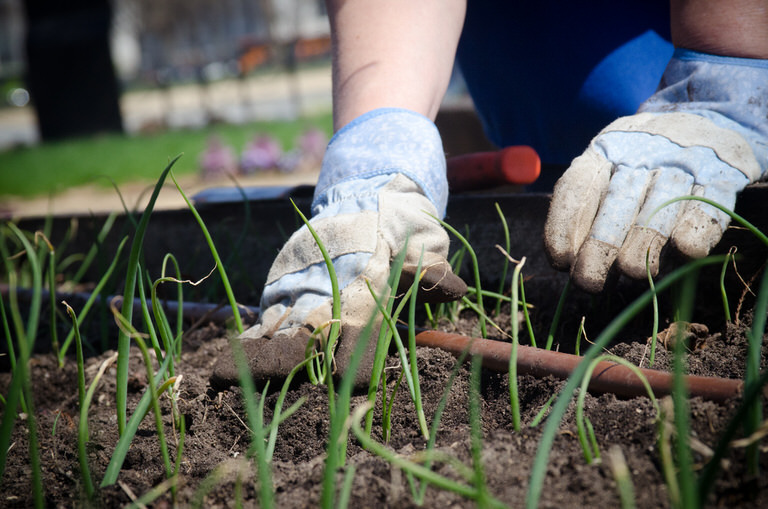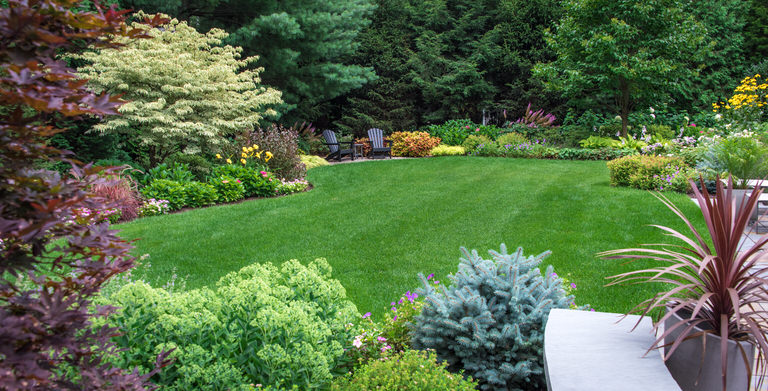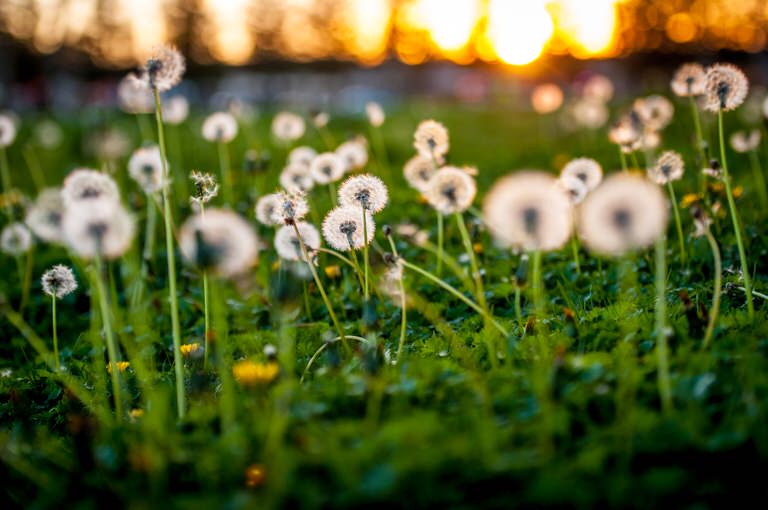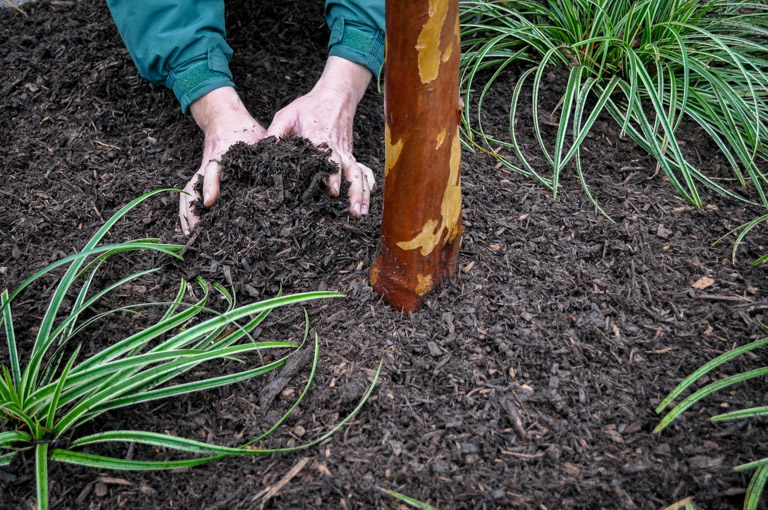During the early fall, we often get calls from potential clients who assume the new plantings they desire will have to wait until next spring. “Not at all,” we tell them. “Fall is the best time for new plantings!”
Just because spring and summer are over does not mean it’s too late to add some new plants to your landscape. September, October, and November are the perfect months to assess your existing plants and to add new ones to enjoy for many years to come. This is especially true for perennials, many shrubs, and trees. Spring and summer are also fine for planting, but each of those seasons carries some risks for new plantings, such as lack of water and heat stress of the summer. Here are the top 5 reasons why we think fall is the best time for new plantings.
1. Cooler Weather Is Better For Plants…
With the end of summer’s long, hot, and often humid days comes the shorter, cooler, drier days of autumn. The combination of warm soil and cool air are ideal conditions for many plants. During the fall, plants no longer devote their energy to top-growth. Instead, the energy is concentrated on the root growth that is taking place below the surface. By planting in the fall, you are giving new plants the ability to establish a good root system. A better root system will help make the plants more drought tolerant the following summer. The deeper and better established the roots, the better a plant will tolerate drought. With the cooler weather and shorter days, plant’s leaves are not scorched by the sun. This helps reduce the stress of being newly planted. Additionally, the demand for water from the roots is lessened. More on this below.
2. …and Cooler Weather is Better for You Too

We love what we do and we have some of the hardest working guys we know working for us, but nobody is excited about digging holes in 90º+ weather. Planting in the summer can be taxing on you due to the high temperatures and humidity. The cooler fall weather makes it feel like half the work and is a much more enjoyable environment for garden work. Who doesn’t love being out in the crisp and cool autumn air? Even if you plant in the spring before the heat of summer, conditions may make planting difficult. The spring is often rainy and can leave few days for planting, especially if weekends are the only days available to you. The amount of rain in the spring may also cause the soil to be muddy, which is less than ideal for digging holes for new plants.
3. Less Watering
As we mentioned above, there is less demand for water from the roots during the fall. Because the plant is not putting energy into top-growth and the cooler weather all but eliminates evaporation, plants require less water in the fall than in the spring or summer. Thankfully, here in New Jersey we usually get sufficient rain in the fall. With Mother Nature taking care of a lot of our watering, planting in the fall requires less work after the initial planting. This is not to say that plants do not need to be watered at all though. If it is particularly dry or windy, we recommend watering your plants in the fall.
4. Early Spring Growth

When you plant new plants in the spring or summer, they need to devote a good deal of energy to rooting. This takes away from the energy that would be devoted to top-growth and blooming. By planting in the fall, plants can expend much more energy on what is happening above the surface when spring rolls around. In New Jersey, most homeowners must wait until May or June before the ground is ready for new plantings and plants are available at nurseries. This gives plants installed in the fall a six-month head start on plants planted in the spring. This means wildflowers planted in the fall will bloom earlier and your perennials will show their beautiful and colorful blooms in their first season. As an added bonus, fall plantings and early spring growth provide nectar sources for pollinators at times when they struggle to find sources of food. As we all know, pollinators play an extremely important role in the foods that we eat.
5. Fewer Weeds and Pests

As all of us know all too well, the struggle is real when it comes to weeds during the summer months. Thankfully, weed seeds are dormant in the fall. This means that new weeds do not grow during this time of the year. Of course, new weeds will sprout in the spring, but you can easily pull them when they are newly sprouted. In addition to dormant weeds, many harmful insects, such as leaf spotters or leaf chewers, are less active in the fall because they are either dead or are preparing to hibernate. Fewer pests mean less stress on the plants. Not only are there fewer weeds and pests in the fall, but disease is also less prevalent due to the drier air autumn brings with it. This is because the humidity of spring and summer promote many common plant diseases.
Summary
As you can see, there are significant benefits to plant perennials, shrubs, and trees in the fall. Instead of spending time regretting what you did not plant this year, spend that time installing plants (or calling a local landscape professional to handle plant selection and installation) in September, October, and November in order to enjoy them all season next year!
If you are going to be installing new plants in the fall, we would highly recommend applying approximately 3” of mulch before winter comes. Mulch will act as an insulator and will help prevent wild temperature fluctuations in the soil. Additionally, mulch will help retain moisture in the soil.






